The Benefits of Skipping for Runners
Finding time in our busy lives to get in enough running to achieve our personal goals is tough enough without being constantly bombarded by posts and articles instructing us to add in strength work, or core stability or to improve our joint mobility or, ‘all of the above’. If we did all the supplementary workouts that are supposed to improve our running, we may never have enough time to actually head out the door and run. The problem lies in the fact that all this additional work is based on what the World’s best runners are doing. These are professional athletes who have nothing else to worry about other than getting all their sessions in. They are not squeezing in a session before the school run and a full day at work and they certainly have more energy than us at the end of the day to get in a second workout (for them even a third).
The frustrating aspect to this argument is that strength, flexibility and mobility will all definitely contribute to our running success. It may not translate directly to more speed but it will undoubtedly reduce our risk of the injuries which occur as a consequence of the stress and strain we heap on our bodies while pounding the pavements. Reducing the amount of downtime we experience while recovering from injury will most definitely improve our training consistency and that they say, is key.
Part of the problem of fitting in strength sessions into our weekly training is that it requires equipment which we can only find at the gym. So, not only is it the time that the workout will take but we need to also factor in the time travelling to and from the health club and the cost of said club. Obviously we could set ourselves up at home and, while being ideal, this presents a whole other set of problems including space and financial allocation.
One piece of equipment that has probably the highest ratio of bang for our buck is the humble jump rope. Easy to store in the sock drawer, easy enough to deploy wherever there is a little bit of space and probably less expensive than some of the socks it shares the drawer with. An added bonus if we are required to travel a lot, is that our jump rope travels just as well as our running shoes.
How effective is jumping rope or ‘skipping’ as a supplementary workout for running? The simple answer is, very. The most common area of injury in runners is the lower leg. Achilles and calf muscles are constant sources of strains, tears or just muscle soreness. I don’t think we need to explain how much skipping will exercise our calves. The eccentric loading or decelerating that occurs when we land on our forefoot while skipping is probably one of the best exercises for the achilles tendon. Ask any runner who has been to the physio with achilles pain and, with almost no exceptions, they will tell you that they prescribe ‘calf drops’ as a strengthening exercise of the pesky, tough cables above our heels.
REBEL Jump Ropes
Skipping also promotes excellent running form. Even with the advent of heavily cushioned super-shoes, runners should still be trying to strike the ground mid to forefoot. This is still the fastest way to run and transition through the foot strike into the toe off without losing energy in the running gait. It is impossible to skip effectively with a heel-strike. Posture while jumping rope is also crucial and mirrors good running posture. An upright, tall posture with shoulders back and hips aligned is necessary in both activities. Achieving this strong position while skipping requires and will therefore create a strong core, which will directly impact our stability while running. The biggest benefit from skipping will be quick feet. We will find our running cadence and efficiency improving as a result of only one or two jump sessions in our week. The quick loading and unloading of the muscles in our legs is exactly what we are looking for as we try to pick up speed in our running.
To avoid frustration, remember that skipping is not easy in the beginning. There is quite a bit of technique and coordination required and there is definitely a learning curve. A couple of things to keep in mind when we start.
- Posture – As mentioned, the posture of skipping is the same as what we are looking for in our running. Tall and proud with squared shoulders and our necks, spines, hips and thighs all making more or less a straight, vertical line.
- Stay relaxed – Initially this is going to be difficult as you learn the basics but keep reminding yourself to keep the arms, shoulders and back relaxed and easy.
- Don’t jump too high – We only need to jump high enough to get over the rope. The lower we can achieve clearance without tripping ourselves up and falling on our face, the quicker we will be back on the ground again to repeat the process. This will ensure that our cadence is nice and high and our movements are short and snappy.
- Soft leg levers – We want to keep the knees slightly bent and the ankles will be in constant motion. There is no locking of any of the joints in our legs as we go through each jump.
We don’t need to jump rope for hours and hours. Short sessions of up to 20 minutes total, 2-3 times a week will produce all the results that we need. It is advisable to break up each session into interval type periods with short breaks in between. Our main goal is for the strength and stability that jumping rope provides so we don’t need to overly tax our cardiovascular systems.



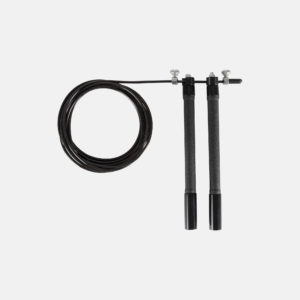

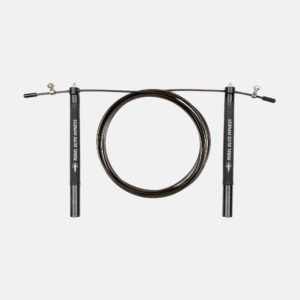

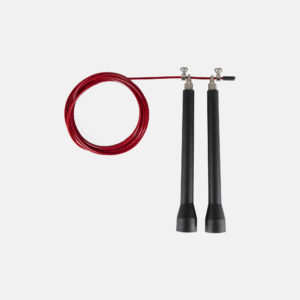
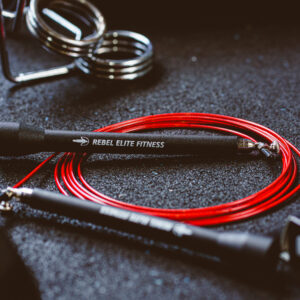
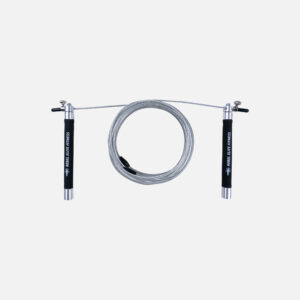

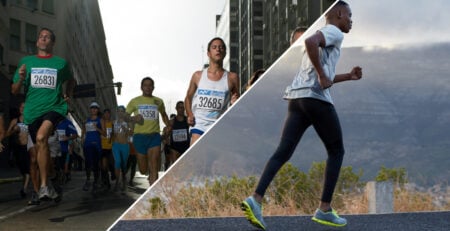


Leave a Reply